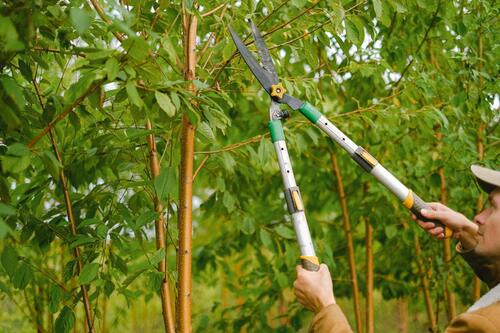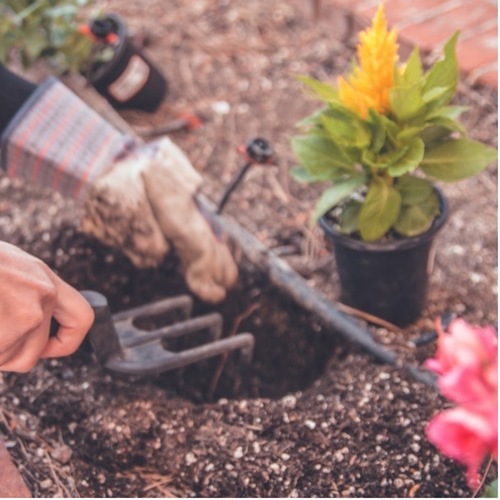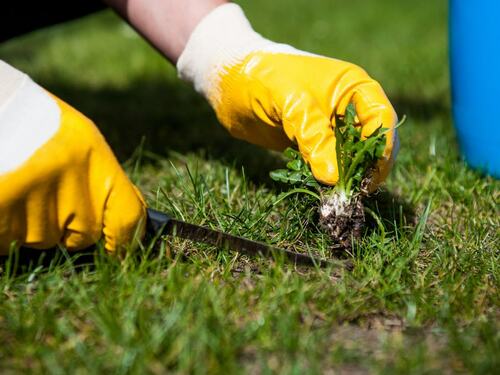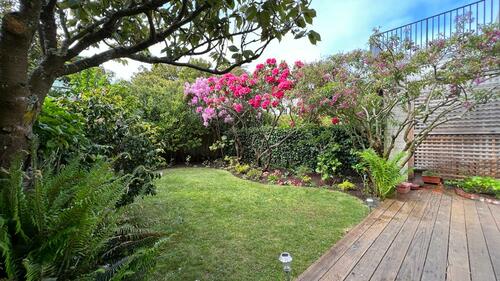5 Critical Landscaping Mistakes to Avoid for a Thriving Yard
Introduction
Landscaping is an essential aspect of home maintenance that can significantly enhance your property’s curb appeal and value. However, even well-intentioned homeowners can make mistakes that harm their yard’s health and appearance. This guide will explore common landscaping pitfalls and provide expert solutions to help you create and maintain a beautiful, thriving outdoor space.
1. Mowing Your Lawn Too Short

Green Grass is Cut by a Mower – Photo by Skitterphoto on Pixabay
One of the most common mistakes homeowners make is cutting their grass too low . While a closely cropped lawn might seem neat and tidy, it can actually damage your turf and lead to long-term problems.
The Risks of Overmowing
- Reduced Photosynthesis: Short grass has less leaf surface for sunlight absorption, hindering its ability to produce energy.
- Weak Root System: Overly short grass develops shallow, weak roots that struggle to absorb nutrients and water.
- Increased Vulnerability: A too-short lawn is more susceptible to drought, pests, and weed invasion.
Best Practices for Lawn Mowing
- Maintain an ideal grass height between 2.5 to 3 inches.
- Follow the “one-third rule”: Never remove more than one-third of the grass blade length in a single mowing session.
- Adjust your mowing frequency based on grass growth rate and season.
2. Improper Pruning Techniques

A Worker Carefully Prunes a Tree – Photo by Anna Shvets
Proper pruning is crucial for maintaining healthy plants, shrubs, and trees. Incorrect pruning can not only ruin the aesthetics of your landscape but also compromise plant health.
Common Pruning Mistakes
- Overpruning: Removing more than 10 to 15 percent of a plant at once can shock the system.
- Poor Timing: Pruning at the wrong time of the year can disrupt growth cycles.
- Using Dull Tools: Blunt shears create jagged cuts that heal poorly and invite disease.
Expert Pruning Tips
- Prune most plants during their dormant season for minimal stress.
- Use sharp, clean tools to make clean cuts at a 45-degree angle.
- Research specific pruning requirements for each plant species in your landscape.
3. Watering Woes: Finding the Right Balance

A Drip Line Runs Alongside a Green Plant
Proper watering is essential for plant health, but both overwatering and underwatering can cause significant problems. Understanding your landscape’s water needs is key to maintaining a lush, vibrant yard.
Signs of Improper Watering
- Overwatering: Yellowing leaves, mushy stems, and fungal growth
- Underwatering: Wilting, brown leaf edges, and slow growth
Smart Watering Strategies
- Install a rain gauge to monitor natural precipitation.
- Water deeply and less frequently to encourage deep root growth.
- Consider soil type : Sandy soil requires more frequent watering than clay-rich soils.
- Use mulch to retain soil moisture and reduce evaporation.
4. Planting in Unsuitable Locations

A Prime Spot is Prepared for a New Plant – Photo by Kenny Eliason on Unsplash
Choosing the right location for each plant is crucial for its survival and thriving. Many homeowners make the mistake of placing plants in areas that don’t meet their specific needs.
Factors to Consider When Planting
- Sunlight requirements: Full sun, partial shade, or full shade
- Soil type and pH levels
- Hardiness zones and local climate conditions
- Mature plant size and growth habits
Tips for Successful Plant Placement
- Research each plant’s specific needs before purchasing.
- Group plants with similar requirements together for easier care.
- Consider microclimates within your yard when selecting locations.
- Consult with local nurseries or landscaping professionals for expert advice.
5. Neglecting Weed Control

A Weed is Carefully Removed with a Gardening Tool
Weeds are more than just an eyesore; they can seriously impact the health and appearance of your landscape if left unchecked.
The Dangers of Ignoring Weeds:
- Competition for nutrients, water, and sunlight with desirable plants
- Potential to harbor pests and diseases
- Some weeds can cause skin irritation or allergies
- Rapid spread if not controlled early
Effective Weed Management Strategies
- Regular manual removal, especially when weeds are young.
- Apply organic mulch to suppress weed growth.
- Use natural or chemical herbicides as needed, following label instructions carefully.
- Maintain a healthy, dense lawn to naturally crowd out weeds.
Professional Landscaping Services: When to Seek Expert Help

A Professionally Maintained Lawn & Greenery
While many landscaping tasks can be handled by homeowners, there are times when professional assistance is invaluable. Consider hiring a professional landscaping service if you:
- Lack the time or physical ability to maintain your yard properly
- Want to implement a complex landscape design
- Need help with plant selection and placement for your specific climate
- Require assistance with large-scale projects like tree removal or hardscaping
For residents in the San Francisco Bay Area, many local companies offer comprehensive landscaping services, including weeding, mowing, yard cleanup, plant selection, and expert landscape care advice. Contact one of them today to receive expert advice on how to avoid common landscaping mistakes and create a beautiful, sustainable outdoor space. And for help incorporating and maintaining trees in your landscaping, contact Arborist Now for expert care!
By avoiding these common landscaping mistakes and implementing best practices, you can create a thriving, beautiful yard that enhances your home’s value and provides a welcoming outdoor environment for years to come. Remember, a well-maintained landscape is an investment in your property and your quality of life.
Originally posted on February 21, 2021.


